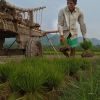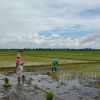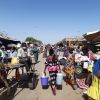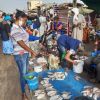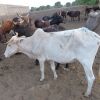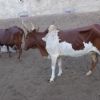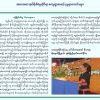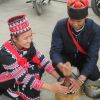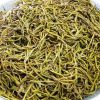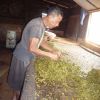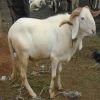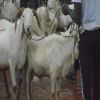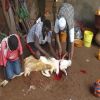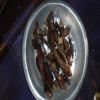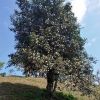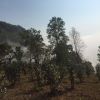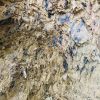The search found 237 results in 0.023 seconds.
Search results
COVID-19 is not the only challenge that common people across the world have been faced with. But there are places where this problem has been compounded due to other kinds of natural challenges felt locally. This has been particularly so in the state of Assam in India where annual flooding ravaged lives and livelihood. The worst hit have been the ones settled in low lying flood prone zones across the state, making it simply impossible for many to engage in cultivation of the staple food crop, rice.
This morning I was at the marketplace, after more than a week without going out. I was astonished by what I saw: almost everyone (adult, child, woman, man, young, old, buyer, seller, security guard...) had a mask. I was astonished because in social networks (Twitter, Facebook) I keep hearing about "the indiscipline of Senegalese who do not respect the barrier measures, especially the wearing of masks". I personally found it very responsible that everyone has a mask, with a few rare exceptions. Then I am aware that there are all the problems related to the quality of the mask and its use.
Maybe the people I met today are not asking themselves all these questions. The awareness messages just ask them to "wear" a mask. At the same time, the Minister of the Interior has issued an order on the wearing of masks and the police are punishing all those who do not respect the measure by making them pay a fine of between 3000 and 6000 CFA. One of my neighbors who goes to the market every day told me that she thinks it's a bit stupid to have to pay such sums when a mask costs between 100 and 300 CFA on each street corner.
Luntaya acheik originated in Konbaung dynasty (1752-1885) and could be worn only by kings and queens. If this new fabric was presented respectfully to the king and queen, a prize would be awarded to the giver. Commoners were not allowed to wear a new one but it could worn the king’s hand-me-downs which is awarded to the outstanding person in the service of the king.
It is on this street, which is on the right side of my house, that the window of my room opens. Every morning when I wake up, I look through it mechanically, even if I can't see anything out of the ordinary. It's a quiet street and not very busy, especially in the morning. The house with the mustard-yellow door is one of the oldest in the neighborhood: it was built in the 1970s by a shopkeeper from Gandiol in northern Senegal. The bricks with decorative motifs that were used to build the wall are typical of this period and are now only seen on very old buildings.
In Gao and vicinity, it is common to hear announcements of lost cattle on local radio. To be useful, the message must contain fairly precise descriptions. For example, let’s take a red cow – in Songhay, haw (cow), ciray (red). To be sure, the phrase haw ciray is correct, as it literally means “red cow”. Then, why does such a description amuse some villagers just a few kilometres away from town?
The terminology for cowhide patterns remedies this imprecision. One can say that it is a photographic – chromatic thumbnail – index to the expanded spectrum of combinations. The best way to gauge its efficiency is to compare standard patterns. Our main informant, an experienced herdsman, estimates that he can recognize up to 120 patterns, but the full count may come close to 150. For the most part, these names are originally borrowed from Fulfulde, the language of the traditionally herding Fulbe (Fula).
Kyauktawgyi Pagoda is located in Taungthaman Village tract: which includes Semi Tun Village, Taungthaman Village, Oh Bo Village, Htantaw Village. Kyauktawgyi Pagoda is surrounded by these villages, and children from nearby villages come and play at the pagoda.
Woman Led Self-Reliance Family
I would like to share something with you about an ethnic Lahu family in Southern Shan State, Myanmar. This is a women-led family and they are relying on their own farm for their family foods and income generation. She is Daw Thida Aung with 52 years old and her husband is a religious leader. The family consists of four family members with her husband, a daughter and son.
Tea leaf is a Myanmar language called Laphet. Laphet is the meaning of tea plant, pickled tea leaves, pickled tea leaves mixed with other ingredients and served up as a delicacy (Myanmar Encyclopedia, Vol.IV, 1981).
The techniques of weaving industry including luntaya acheik could be woven the locals proficiency. It was the most flourishing period in Konbaung dynasty (1752-1885). In later times, the people had less interested in wearing acheik garment due to the political and economic difficulties.
This report released by the Ministry of Health states their persistent monitoring and testing of food products to ensure health safety and promote the well-being of citizens. It further explains that on lab examinations, 43 brands of tea (pickled) on the Myanmar market contained significant traces of Auramine O. Auramine O is a diarylmethane dye used in fabric coloring processes and despite lacking any immediate affect on consumer health, is hazardous and harmful to the kidneys and liver, therefore unsuitable for consumption.
The first step in making steamed, pickled tea the traditional way is to evenly lay out the tea leaves on a reed or bamboo mat. Next, the tea is rolled out by hand. This is done by placing both hands side by side and gently pressing down on the tea leaves with the lower palm of both hands.The steady back and forth motion of the slowly rolls the tea leaves. More and more pressure is added as the tea leaves begin to roll and curl up. This process takes about 15 minutes. Locals may use tea rolling machines if they are available.
The feast of Aîd El Kébir or tabaski is a Muslim feast. It involves prayers and the slaughter of animals (preferably sheep). This year, it coincided with the Covid 19 pandemic and its consequences. This explained the soaring prices of sheep in the market. The animals were exposed in the parks and on the streets to customers. The prices varied between sixty thousand (60,000 F cfa) to four hundred thousand (400,000 F cfa and up). Because of the high price of sheep, within twenty-four hours (24 hours) of the event, some Muslims could not have the sheep of their choice.
The first activity on the feast day tabaski is group prayer in the public squares. Otherwise it will led in the mosques by the Imams who will be the first to slaughter their animals. After the immolation of the Imams from each zone, the rest of the community starts to slaughter their animal. Following the mechanical skinning of the animals, the meat is distributed at three levels: firstly, the share of the disadvantaged first, then the next of kin and the third part is for the family. This meat is consumed in different dishes, at least within the families.
Tea cultivation is one of the main rural livelihoods seen in Kyaukme Township, Northern Shan State. It can be seen in the many hills around the area. In Kyaukme Township, tea plants have been cultivated naturally for many years. Botanically speaking, tea belongs to the genus Camellia, species Thea and family Theaceae. Tea is a perennial crop. Most tea plants are not allowed to grow more than 3 feet high. This is because tea cultivators prefer to keep the plant low as it is difficult to pick tea leaves when the tree is tall.
Tea trees are kept small by tea growers and are evergreen throughout the seasons. In their natural state, they can grow to be up to 30ft tall. However, tea growers keep their tea tress to within 4-5ft in height. This ensures that the tea trunk remains thick and encourages more leaf and branch growth. Tea growers do so to get as much leaves as possible from their trees as the leaves are the sole product of tea trees. Keeping the tea trees short makes tea harvest easier to harvest.
I arrived at place that has a mountain with the edible earth. I found that the wonderful mountain earth is eaten by PaOh ethnic elders especially for women and pregnant women. They often eat the edible earth in two ways; first is fresh earth and second is baking the earth. Usually they put the edible earth in the traditional oven to have a good smell and better taste. They believe that it is good for their health and it helps for pregnant women to get their energy. Nowadays most of young generations don't know about the edible earth.
The luntaya acheik garments have been wearing wemen as well as men since the monarchy times. Concerning with the acheik garment for men, Ms. Sandy Moe who is a MA second year student of Department of Anthropology at University of Mandalay said:
One of the first women to ever weave the Naga national flag, Lathon Kemp, passed away on the 5th of January, 2021. The news of her death brings to mind the flag and the very important place it holds in the life of the Nagas. Although, it was hoisted for the first time on the 22nd of March in 1956 in the Parashen-Rengma region, the Nagas believe the flag to have a divine origin and not designed by any mortal. A red, green and yellow rainbow is spread out against a field of blue which represents the sky.
Pages


